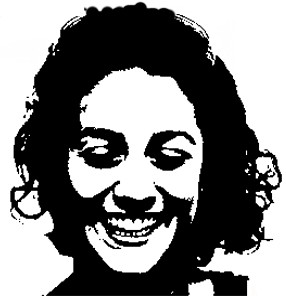Hebron: A city of two tales
In reality, Hebron is more than a city of two tales. It is a city of over a hundred thousand residents, over 4,000 years of history, the patriarchal tombs of Judaism and Islam, and innumerable tales. But last week I heard a couple accounts, on two different tours of the city. If nothing else, I came away understanding that Hebron (Hevron in Hebrew, Khalil in Arabic) is a complicated, tense, multifaceted, historical, religious, humanitarian, political mess.
Basic facts, both Mikhael of Shovrim Shtika (“Breaking the Silence” –Israeli soldiers talk about the occupied territories) and David, spokesman for the Jewish community of Hevron agreed on. Ten years ago, following the Oslo and Wye accords, Hebron was divided into 2 sectors; H1 to be under the control of the Palestinian Authority and H2 to be under the control of the Israeli government. Indisputable square mileage tells us that the PA received 80% of the city, with the remaining 20% designated to the Israeli government. This division only begins to tell the story.
David laments that the Jews, in reality, have access to only 3% of the city, while Mikhael points out the fact that at the time of this 80/20 partition, there were over 100,000 Palestinian residents of the city and approximately 600 Jews. Additionally, included within the Israeli-controlled 20% are notable landmarks such as the remains of the old city of Hebron, the central market of the modern city and Ma’arat HaMachpelah (Cave of the Patriarchs), where Abraham, Isaac, Jacob, Sarah, Rebecca and Leah are believed to be entombed.
When the city was partitioned in 1997 most estimate that 30,000 Palestinians (out of the total 120,000 in the city) were put under Israeli-control in the H2 sector of the city. Since then, life has become increasingly difficult and most who could afford to do so, left, mainly across the blockades into H1. Mikhael quotes a B'Tselem report that 43% have left, while David implies the number is higher and that only 3000-5000 remain.
The central souk (market), 1000 shops which once served the entire undivided city, has been closed by military order because of violence and tension between the Jewish and Palestinian communities. Several main roads in H2 are closed to Palestinian foot and vehicle traffic, even to those whose front doors open to the street, forcing residents to exit via rooftops or become virtual prisoners in their own homes. During the second Intifada, curfew was regularly imposed on Palestinians in the city, forbidding them to leave them homes. Mikhael reports this was the status quo for over 500 days in 2002 and 2003 alone.
The ratio of soldiers to Jewish settlers is 1:1, with additional police and border patrol stationed throughout the city. Both guides mention that today is the best situation Hebron has seen in the past 7 years; there is a smattering of open shops and relative calm in the city. But this is relative and the years have taken their toll, leaving H2 as a deserted ghost town, with rows of boarded-up stores and far more soldiers than civilians in sight.
No one disputes that 1929 was an, if not the, integral year in modern Hebronite history, when the mufti of Jerusalem incited Arab residents of the city to riot which resulted in the deaths of 67Jews and the end, more or less, of Jewish settlement in the city until after Israel occupied the West Bank in 1967.
Today’s Jewish community cites this earlier community (that existed pre-establishment of the state of Israel), in addition to the weighty religious significance of the city, as grounds legitimizing their presence in Hebron. This massacre weighs heavy on the minds of Jewish residents and graffiti covering the closed-up shops of H2 regularly reads “death to Arabs”, and “נְקָמָה” (nekama - revenge) making not-so-subtle references to the 1929 killings.
Mikhael cites a second definitive year in Hebron’s recent history, which David avoids discussing until directly questioned about: 1994, when Jewish resident Baruch Goldstein entered the mosque portion of the Cave of the Patriarchs and massacred 29 praying Muslims, wounding another 150.
David brought us into Beit Hadassah, a former hospital and the first building to be re-settled by the Jewish community in 1979, against the wishes of not only Palestinian Hebronites, but also, the Israeli government. Today this building houses a museum of Jewish history in Hebron and a memorial to those killed in 1929. He spoke to us about using democracy as a tool: with which all should be given some rights- healthcare, education- but Arabs should be denied the right to vote and serve in government. Interaction between Jews and Arabs in the city is almost nonexistent, he told me, and went on to cite several examples of Arab violence against the Jewish community. He doesn’t believe there can ever be true peace.
Mikhael took us in the home of Hisham and his family, Palestinians who have remained in their house in H2. Hisham spoke to us of the difficulties his family faces navigating forbidden roads. He showed us several videos; of local Jewish children taunting and throwing rocks at Palestinian children on their way home from school and of local Jewish adults breaking into Palestinian homes to heckle during curfew days. He attests that these are regular occurrences.
Ignorance, Mikhael believes, is the largest problem. The vast majority of the Israeli public doesn’t know the details of what goes on in Hebron. He wants to believe that raising awareness is the first step to understanding where to go from here.

